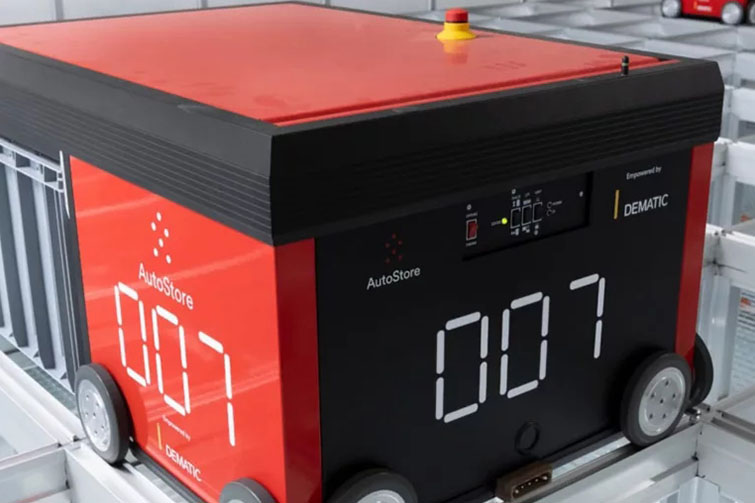

Micro-Fulfillment: The Retailers' Solution to Modern Consumer Demands
In today's fast-paced digital age, consumer expectations are at an all-time high. Shoppers demand convenience, speed, and flexibility, whether they’re purchasing groceries, electronics, or fashion items. To meet these expectations, retailers are increasingly turning to Micro-Fulfillment as a strategic solution. But what exactly is micro-fulfillment, and why is it becoming a game-changer for the retail industry?
What is Micro-Fulfillment?
Micro-fulfillment centers (MFCs) are small, strategically located facilities designed to fulfill online orders quickly and efficiently. Unlike traditional distribution centers situated on the outskirts of cities, MFCs are typically located closer to urban areas or even within existing retail stores. This proximity to the end consumer significantly reduces delivery times, catering to the growing demand for same-day or next-day delivery.
Why Micro-Fulfillment is the Future of Retail
- Speed and ConvenienceIn the age of instant gratification, speed is a crucial competitive advantage. Micro-fulfillment enables retailers to process and deliver orders in a fraction of the time required by traditional warehouses. By situating inventory closer to customers, retailers can offer rapid delivery options, including same-day pickup and local delivery, meeting the expectations of today’s time-sensitive shoppers.
- Cost EfficiencyTraditional fulfillment models often involve significant transportation costs, particularly for last-mile delivery. Micro-fulfillment reduces these expenses by minimizing the distance between the inventory and the customer. Additionally, automated systems within MFCs streamline the picking and packing processes, reducing labor costs and increasing operational efficiency.
- Optimized Inventory ManagementMicro-fulfillment centers leverage advanced inventory management systems to ensure accurate stock levels, reducing the risk of overstocking or stockouts. This real-time visibility allows retailers to replenish inventory more efficiently, ensuring popular items are always available.
- Increased Scalability and FlexibilityThe modular design of MFCs allows retailers to scale operations up or down based on demand. During peak shopping seasons, such as Black Friday or holiday sales, MFCs can quickly adapt to increased order volumes without the need for significant infrastructure investments.
Real-World Applications and Success Stories
Major retailers are already embracing micro-fulfillment strategies to enhance their competitive edge:
- Walmart and Target have integrated MFCs within their stores, enabling faster order processing and local delivery.
- Amazon continues to expand its network of urban fulfillment centers, ensuring rapid delivery times for Prime members.
- Kroger has partnered with robotics companies to automate picking processes in their MFCs, optimizing efficiency and accuracy.
These examples demonstrate how micro-fulfillment not only enhances delivery speed but also improves overall customer satisfaction, driving brand loyalty and repeat purchases.
Challenges and Considerations
Despite its many benefits, implementing micro-fulfillment comes with challenges:
- High Initial Investment: Setting up automated MFCs requires significant upfront costs. Retailers must carefully evaluate their return on investment before adoption.
- Complex Integration: Integrating MFCs with existing supply chain systems and e-commerce platforms can be complex and time-consuming. Retailers need robust IT solutions to ensure seamless operations.
- Space Constraints: Urban real estate is expensive and limited. Finding suitable locations for MFCs near high-demand areas can be challenging.
The Future of Micro-Fulfillment
As e-commerce continues to grow, the demand for faster, more convenient delivery options will only intensify. Micro-fulfillment is poised to play a pivotal role in the future of retail logistics. Innovations in automation, robotics, and artificial intelligence will further enhance the efficiency and scalability of MFCs, making them an indispensable asset for retailers worldwide.
By embracing micro-fulfillment, retailers can not only meet modern consumer demands but also gain a competitive advantage in an increasingly digital and fast-paced marketplace.
Conclusion
Micro-fulfillment is revolutionizing the retail landscape by bridging the gap between online convenience and rapid delivery. It empowers retailers to offer superior customer experiences while optimizing operational costs and inventory management. As consumer expectations continue to evolve, micro-fulfillment stands out as a strategic solution that enables retailers to thrive in the competitive e-commerce era.





